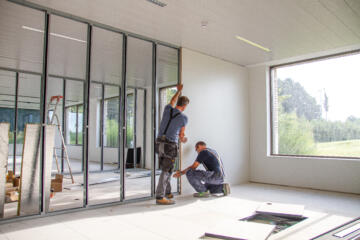Nowadays, the construction sector, just like other industrial sectors, follows a conventional, “linear” economic logic. Materials used in the construction phase come from natural resources that are extracted and used. At the end of their lifespan, their value is not optimally recovered. The circular economy tackles the negative consequences of this model by extending the lifespan of materials to reduce the extraction of new raw materials and waste production.
Circular construction: sustainable advantages
Circular construction involves thinking about the reuseReuse designates all operations by which substances, materials or products that are not waste are used again in an identical way to their originally intended purpose. of materials and “waste” recovery, and also considering the potential for dismantling the construction and its reversibility at the time of its design. This new approach presents numerous advantages:
- Waste reduction: a circular approach in construction reduces waste by encouraging reuse, recyclingAny recovery operation through which waste, including organic waste, is reprocessed to become substances, materials or products that can be used for their initial function or other functions., and repurposingRepurposing designates all operations by which substances, materials or products that have become waste are used again. of construction materials. This reduces the quantity of waste sent to landfills, thus limiting the construction industry’s environmental impact.
- Cost saving: repurposing construction materials can reduce manufacturing costs and the cost of transporting materials. Moreover, waste reduction can also reduce waste treatment costs, which can be beneficial for companies and local communities.
- Job creation: the circular economyThe circular economy is a restorative and regenerative economy. By maintaining the value of the products, materials and resources in the economy through smart product design, repurposing and/or shared use of products, it reduces the extraction of natural resources by using resources already present in the economy. can create new job opportunities, especially in the collection, sorting and treatment of construction materials. The use of recycled construction materials can also encourage the development of new economic sectors, such as construction material recycling.
- Innovation: the circular economy can stimulate innovation by encouraging the development of new technologies and new sustainable construction practices. This can boost the competitiveness of companies in the construction sector.
The circular economy in construction stimulates more sustainable practices by reducing the industry’s environmental impact and preserving natural resources.
Find out more:
- Buildwise - Construction Innovation Hub
- Bouwunie - Union of SMESmall and medium-sized enterprisess





